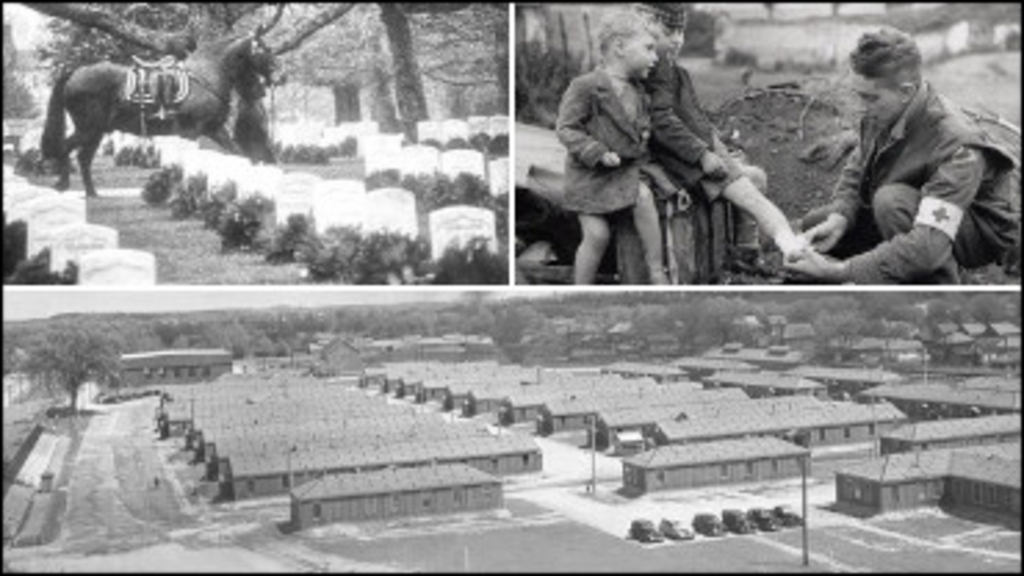
Today's Rewind is dedicated to Remembrance Day which is observed each year on November 11th. That day is upcoming shortly and deserves our undivided attention. Robert Smith has compiled a couple of short stories related to the observance of this solemn day and also included some related photographs. Hope this will suffice.
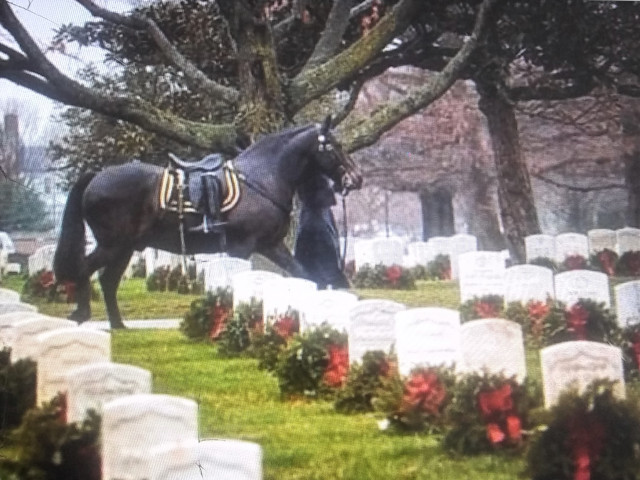
Remembrance Day is a day that we pause to remember the many people who served in countless capacities throughout our country's history to preserve peace and ensure our freedom.
WWII, which spanned the years from 1939-1945, greatly disrupted the whole world and all of its activities. The sport and business of harness racing was no exception. Many young men and women as well left their regular lives to enroll in various activities involving the war. Unfortunately not all of them returned. Also a number of facilities, mainly fairgrounds and their racetracks, were converted to military activities.
Ons such location was located in Peterborough, Ont. In 1940 City Council offered the Exhibition Grounds (which later became Morrow Park) to the Department of Defence as one of 40 military training grounds it would establish across Canada. The annual fair and all activities related to training or racing Standardbred horses was suspended immediately following the fair in 1940 as the grounds underwent a complete facelift. This conversion lasted throughout the war years.
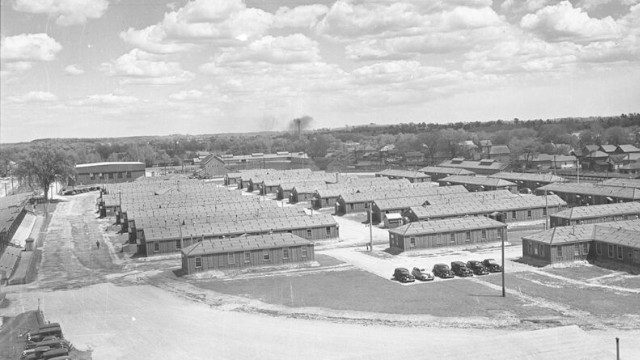
Morrow Park is shown in the above photo after it was converted to a military facility during WWII. On the far left the grandstand and an outline of the track can be seen. (Photo courtesy of Peterborough Museum and Archives)
There was some doubt that the Peterborough Exhibition could be held in 1940, but the Canadian Army engineers supervising the training centre’s construction delayed it by a week to accommodate the fair. The "Ex" as it was often called ran from August 14th to 17th and was one of the best in memory according to the local paper. It featured strong showings in all categories of animals and produce, a good midway, and fine entertainment shows. Attendance was respectable but down a bit – partly attributed to farmers harvesting their crops instead of going to the Ex, because of a wartime farm labour shortage.
Within a few hours of the fair’s closing, lumber for constructing barracks and other camp buildings was on the grounds. Army engineers arrived shortly and put crews of carpenters, plumbers, electricians, and labourers to work. By August 28th — a span of just two weeks — water and sewer lines were laid to serve the 43 buildings completed or nearly finished. Total cost for building the camp was about $300,000.
Once completed to the point of occupancy starting in early October, the facility officially known as "No. 32 Canadian Military Training Centre" began to accept young trainees. By the end of the war a total of 27,000 recruits would eventually rotate through the facility to receive their basic training. A gentleman named Don Willcock, a local historian who wrote a piece for the Peterborough Museum and Archives website, recalled that his father spoke of life at the centre. He remembered that when he trained there in 1941 there was no gymnasium or swimming pool, so the young men regularly marched up and down George St. to use the YMCA facilities located at George and Murray Streets.
For the following almost six years Morrow Park was a very busy spot. Young "would be" soldiers regularly arrived at the facility and began their training and readiness for various jobs related to the war effort. From here they were dispatched to other training facilities or shipped overseas. The war finally ended and soon things began to return to normal.
In May 1946, the Department of Defence returned Morrow Park (including all its structures) to civilian use, with a compensatory $50,000 payment for repairs to the grounds. Auctioning off surplus buildings, intact or as construction materials, raised $30,500 more. Many “wartime” houses were built for returning City servicemen’s families from the remains of No. 32 CMTC — some of which still exist. And so ended that chapter in the history of Morrow Park.
In 1947 harness racing returned to Peterborough again. Late in the season a three-race program with each one going three heats provided a nine-race card for fans who had patiently waited through the war years. Leading the way was a locally owned horse named Buddy Hanover, the property of Quinlan and Crowley of Peterborough. In the sulky was Keith Waples. The Free For All was won by Jack Sunday who recorded the day's fastest mile of 2:13 for owner Lorne Carpenter of Lansdowne, Ont.
Note - I am indebted to local historian Don Willcock of Peterborough for his diligent research on today's subject and Jon Oldham, City Archivist for the Peterborough Museum & Archives for their assistance.
A scene from the battlefields during WWII
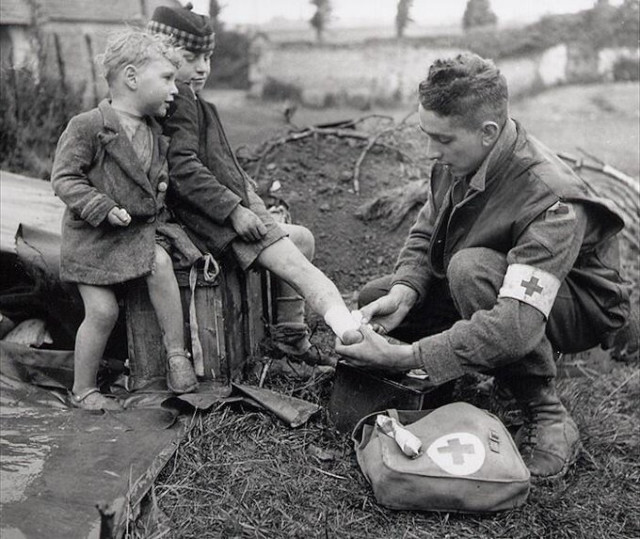
A medic bandages the injured foot of a child while his younger brother looks on, France, 1944.
Quote For The Week: "Lest We forget."
Where does "Lest we forget" come from? The phrase originates in a Victorian poem by writer Rudyard Kipling, who composed it before it was then used to commentate the Diamond Jubilee of Queen Victoria in 1897, when it was published in The Times. It is of course frequently used in connection with Remembrance Day writings.
Who Is It?
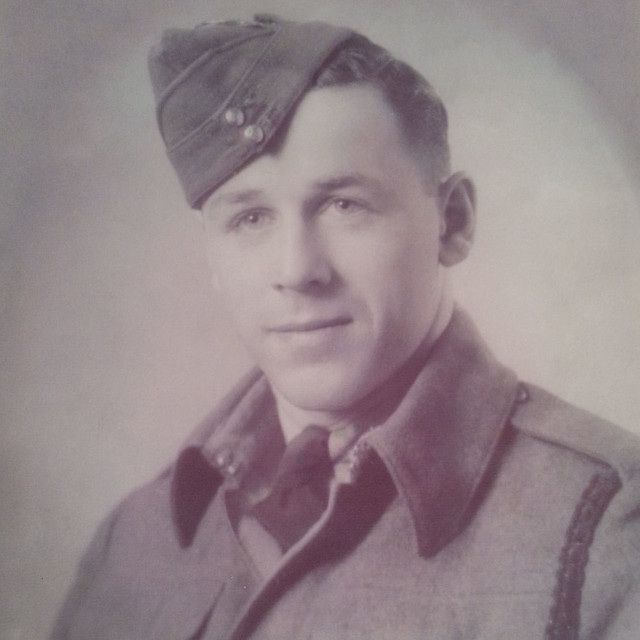
Can you identify this rather young and handsome Canadian soldier in uniform? For many years he participated in the sport of harness racing in various capacities. He is no longer with us but members of his family remain. Let us know who you think he is.
Who Else Is It?
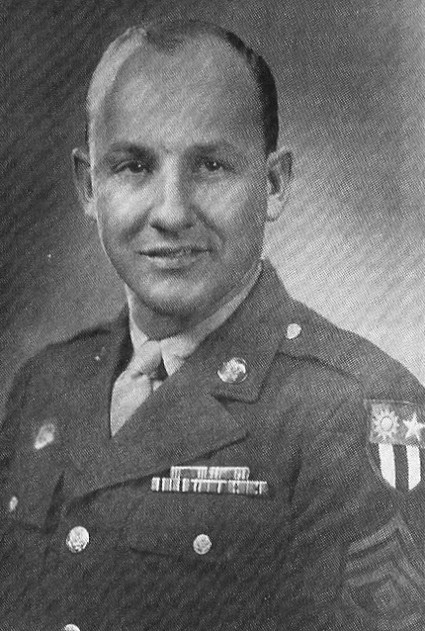
Can you identify this gentleman? Most of us remember him being pictured in his driving silks but today he is shown in military dress as he served his country (The U.S.) during WWII.
Be sure to remain tuned in during the upcoming week as the correct answers are revealed.


This week's pictures were
This week's pictures were again correctly identified. The correct answers were as follows:
The top picture was Stan Brown in his Army uniform during WWII. As so eloquently stated by Hector Clouthier in his comment Mr. Brown was truly a hero who served his country bravely and unselfishly. Although he was seriously injured, thankfully he recovered and returned to enjoy a long life in the country he helped to defend
The lower photo was Delvin Miller shown in his U.S. Army attire. Following his years in the service Mr. Miller had a long and hugely successful career in the sport of harness racing. These are just two of the many men and women who helped to defend Democracy and freedom for those of us who have followed.
With today being the actual Nov. 11 Remembrance Day let us be forever thankful for our brave veterans. As always thanks to those who sent in their comments.
Thanks so much for the kind
Thanks so much for the kind words Butch. You yourself are a HEC of a man!
Gord Brown most assuredly
Gord Brown most assuredly knows who the man is in the "who is it ?" photo but he is too humble to name him because it is his late father Stan Brown who was a decorated war hero in the Second World War. Stan was wounded in battle and spent eight months in a hospital in England before returning home to Canada. We owe a huge thank you to veterans like Stan Brown who put their life on the line for Canada and democracy. I know Gord and Doug are very proud of their dad and I'm sure they won't mind if the rest of us share that pride with them. Stan Brown was a great man !!
Who is it is Stan Brown
Who is it is Stan Brown
Wonderful stuff about Morrow
Wonderful stuff about Morrow Park in wartime Robert! Thanks very much.
Who Else: I believe to be 1st
Who Else: I believe to be 1st Sergeant Delvin Glen Miller
Thank you so much Robert!!
Thank you so much Robert!! Second photo will take a stab, you mentioned U.S. I will say Delvin Miller?
picture #1 ? picture #2
picture #1 ?
picture #2 Delvin Miller
Thanks to all the veterans for their service so we can enjoy a free country today